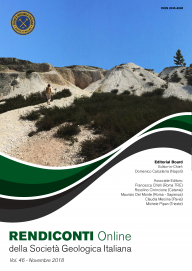
Ricostruzione probabilistica 3D dell’acquifero alluvionale della Val di Cornia (Provincia di Livorno)
Simone Febo (1), Francesco Petrolo (2), Francesco Curedda (1), Andrea Zirulia (1,3,4), Matteo Vacca (1), Marilena Trotta (1), Enrico Guastaldi (4), Giovanna De Filippis (5), Rudy Rossetto (5) & Claudio Benucci (6)
(1) CGT Centro di Geotecnologie dell'Università degli Studi di Siena, via Vetri Vecchi, 34, 52027– San Giovanni Valdarno (AR) - Tel. 055 9119428.
(2) LEM S.r.l., Via Leo Valiani 55/59, 52025 - Levane, Bucine (AR).
(3) Dipartimento di Scienze Chimiche e Geologiche, Università degli Studi di Cagliari, Cittadella Universitaria, S.S. 554 bivio per Sestu - 09042 Monserrato (CA).
(4) GeoExplorer Impresa Sociale S.r.l., via E. Vezzosi, 15, 52100 - Arezzo.
(5) Land Lab, Istituto di Scienze della Vita, Scuola Superiore S. Anna, Via Santa Cecilia 3, 56127 - Pisa.
(6) ASA Azienda Servizi Ambientali S.p.A., Via Gazometro 9, 57122 - Livorno.
Corresponding author e-mail: febo@cgt-spinoff.it
Abstract
Keywords
Get Full Text